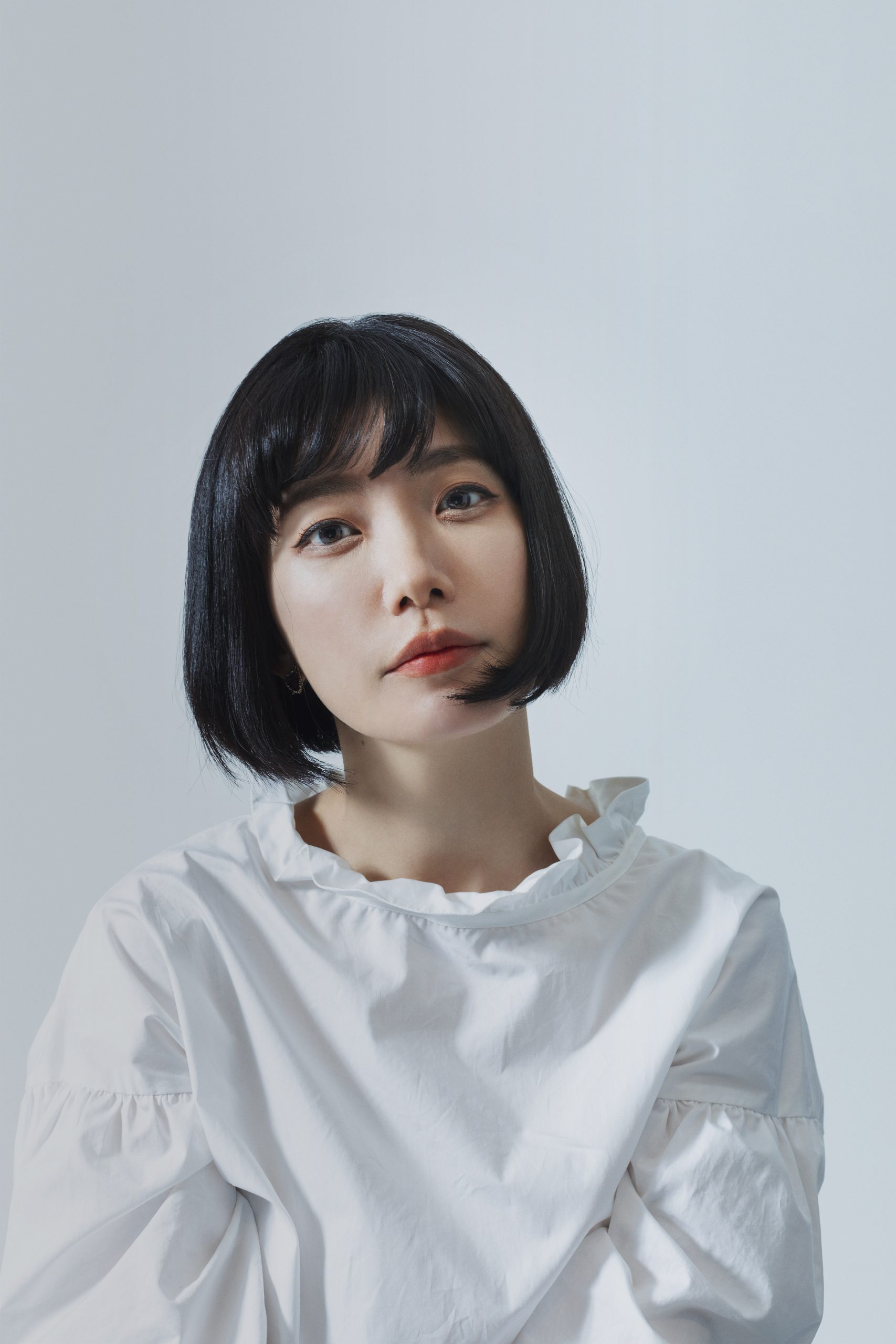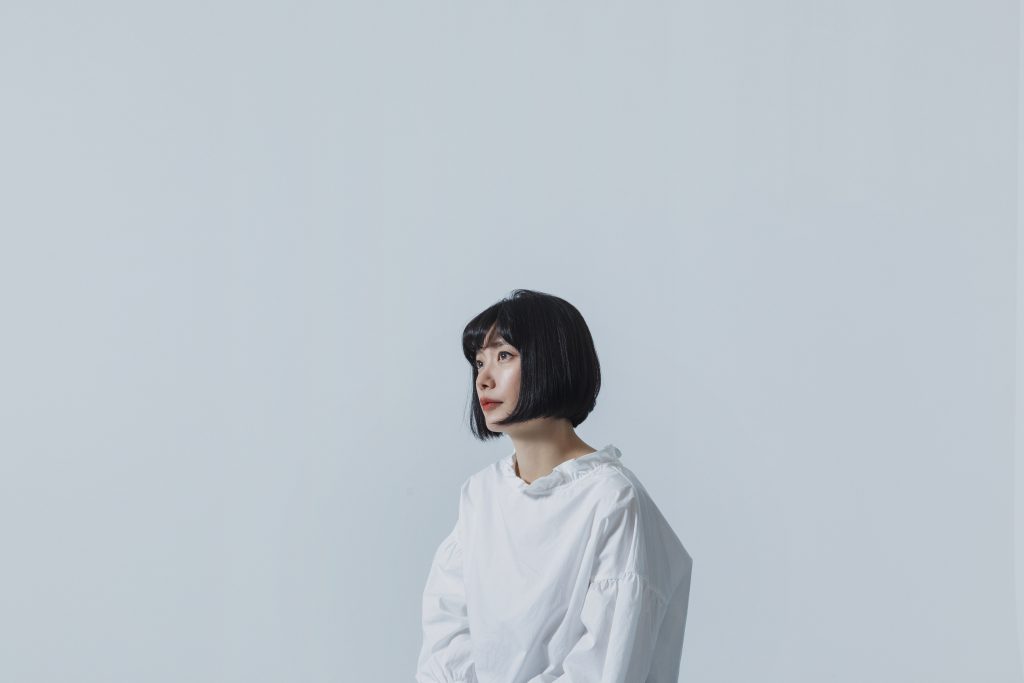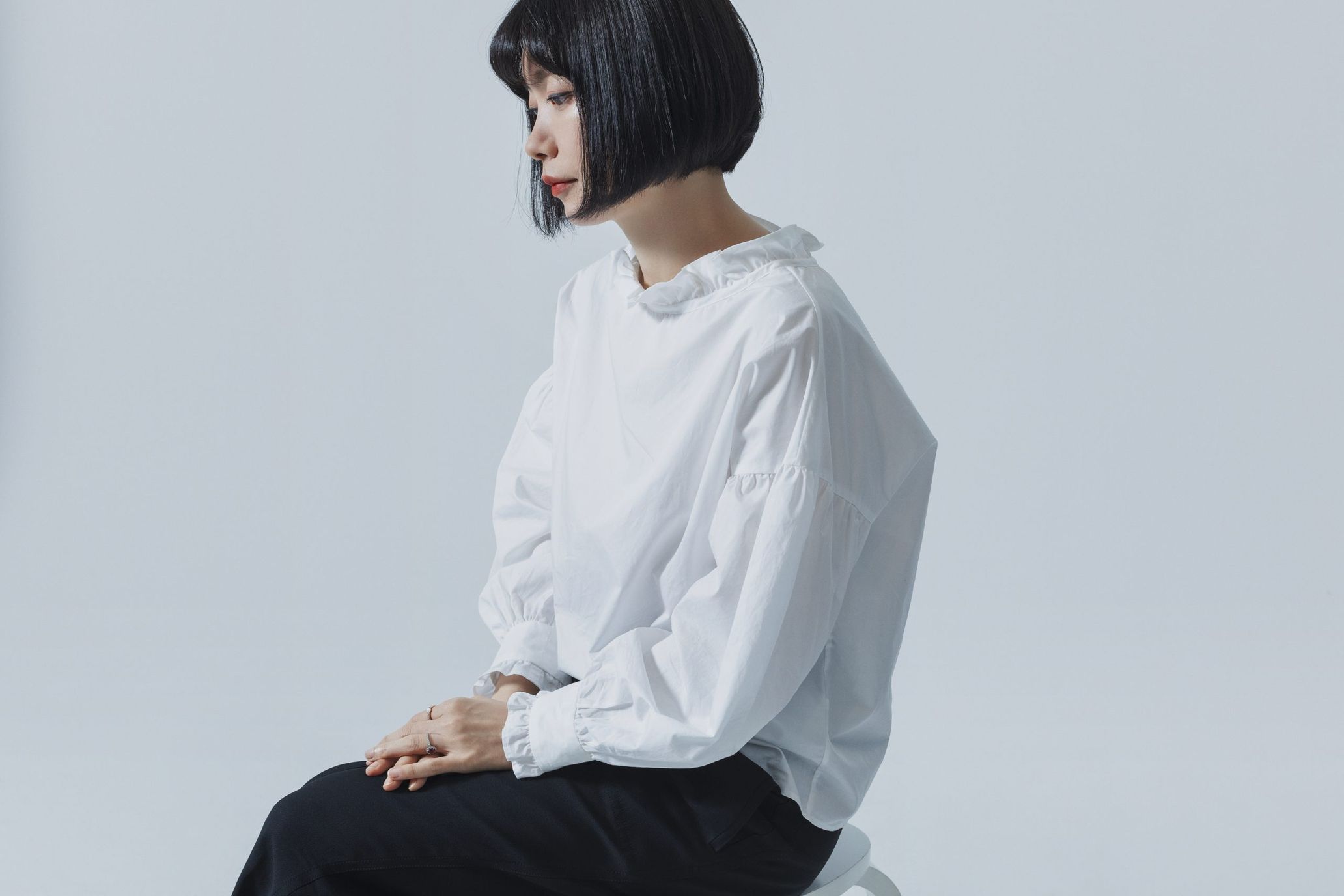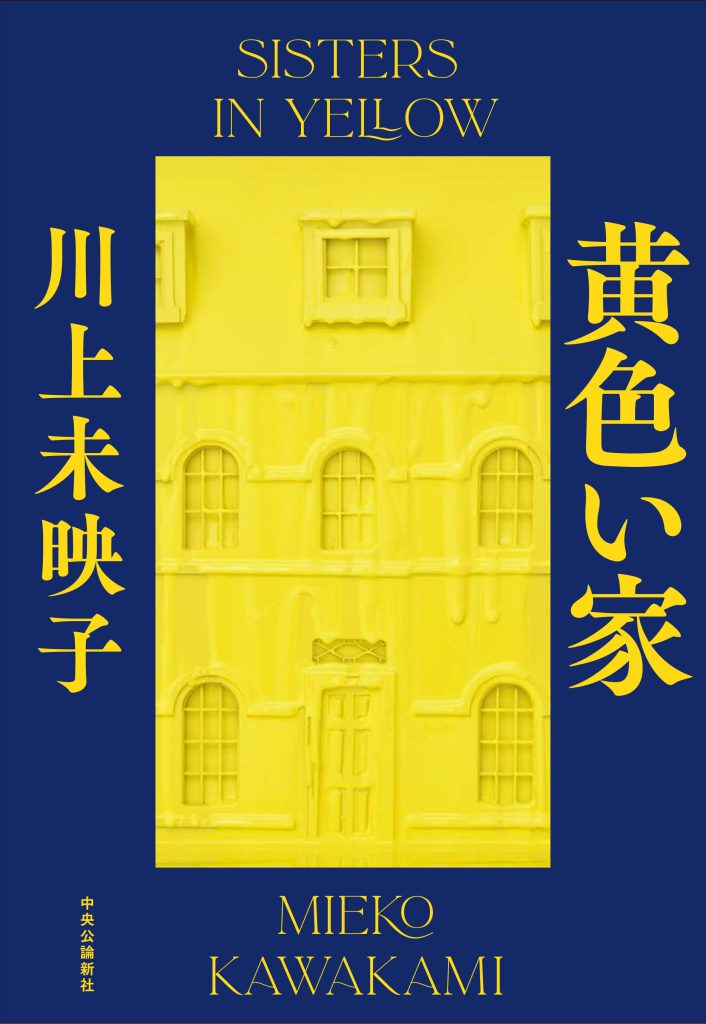Some values are born from the times and cherished by people throughout the ages. In this series, 時音, we look back at the works of people who have promoted such values and speak with them about what they anticipate in the future.

Mieko Kawakami
Mieko Kawakami was born in Osaka. In 2018, she received the Akutagawa Prize for Breasts and Eggs (the novella version). She was awarded the Chuya Nakahara Prize for her poetry collection, Sentan de sasu wa sasareru wa sora ee wa, in 2009. In 2010, Kawakami was awarded the culture minister’s Art Encouragement Prize for New Artists and the Murasaki Shibu Prize for Heaven. She won the Takami Jun Prize for her poetry collection, Water Vessel, and the Tanizaki Prize for Dreams of Love, etc. in 2013, the Watanabe Junichiro Prize for Akogare in 2016, and the Mainichi Publishing Cultural Award for Breasts and Eggs in 2019. Her other books include Ashes of Spring. Breasts and Eggs will be published in over 40 countries, and the English version of Heaven was shortlisted for the International Booker Prize in 2022. In February 2023, All the Lovers in the Night was shortlisted for the National Book Critics Circle Awards.
Twitter:@mieko_kawakami
https://www.mieko.jp/books
In this installment, we spoke to author Mieko Kawakami, whose latest novel, Sisters in Yellow (in Japanese), was published by Chuo Koron Shinsha in February. Her popularity abroad has skyrocketed over the past few years, exemplified by Heaven being shortlisted for the International Booker Prize and All the Lovers in the Night being shortlisted for the National Book Critics Circle Awards.
In Sisters in Yellow, the protagonist, 15-year-old Hana Ito, meets Kimiko, a friend of her mother who works at a Japanese snack bar and starts living with her for several years until she reaches her 20s. With no place of belonging, Hana is at the mercy of money and a place to live. Her life with her pseudo-family, including two people around her age, changes shape as the novel progresses. Sisters in Yellow first made waves as a serialized story in a newspaper, and though some time has passed since its release, you can still find stacks of copies at bookstores across Japan. What did Kawakami put into the novel, which speaks to the times we live in today, and what is her role as an author?
Find the right moment to strike and go for it
—Some time has passed since the publication of Sisters in Yellow. How has the reception been so far?
Mieko Kawakami: I received many responses that stuck out to me, but I was happy to see that many people grew attached to the protagonist, Hana Ito, and wanted to see her through to the end.
—I read your novel as a coming-of-age story. In hindsight, a part of me manufactured my memories to fit my adolescence into society’s romanticized idea of youth. As I read it, the shiny façade of my manufactured youth started fading away, and I realized I didn’t have to glamorize my teenagehood. It was a massive discovery for me to want to face my performative teenage self.
Kawakami: That makes me happy. Thank you.
—You said in a different interview that you were interested in the 90s because that was when you were in your youth.
Kawakami: All I did was work in the 90s, so nothing extraordinary happened to me. What’s interesting is despite where I lived and the culture there, the zeitgeist of the time reached where I was. The works of Kyoko Okazaki and Kenji Ozawa would find their way to hostesses in Kitashinchi. Even if you don’t want to consume them, trends have the power to influence an entire era; it’s also violent, and no one gets to choose [what becomes trendy]. In the 90s, Aum Shinrikyo emerged, and the Great Hanshin Earthquake happened. There was also a prominent youth culture representative of young people then. It’s strange how we all have shared memories, even if we live different lives every day.
—In Sisters in Yellow, you explore cultural phenomena associated with high school girls, like paid dating, slouch socks, Tamagotchi, and more.
Kawakami: Now that around 25 years have passed, we’re finally able to examine the essence of the cultural accumulation of that era. Rather than writing about youth with rose-tinted glasses, there’s a way to come to terms with the 90s as a means to think about the present.
The problems of the Unification Church are being looked into again, as though it were Aum Shinrikyo’s twin. Akin to writing about the 90s and connecting that time to the present, the phenomenon of something from over two decades ago surfacing again will continue in the future.
—This is just my opinion, but it seems like what you wrote in the book was partially based on your youth.
Kawakami: I grew up in Osaka, so the vibe was different. Many people I knew bought Christian Riese Lassen’s works (laughs). But I didn’t write the book to dissect that era or talk about societal issues. The driving force behind it was wanting to witness and document so many things about being human, like the helplessness, hardships, beauty, and energy that comes with it.
No one can determine someone else’s happiness or unhappiness. No one should. We must urgently tackle issues like poverty and young caregivers because they’re systemic and societal. Still, I don’t think anyone has the right to judge those who live in the elusive present with desperation and choose a life of their own from the choices they were given. The world is full of people like Hana: students studying for entrance exams, people fighting hard to raise funds to start a company, and people pushing themselves too hard in any given situation. Taking the initiative is important, but that could change depending on the setting. Also, I don’t think there’s such a thing as a convenient word that can be used in every single situation.
—There may be many people, similar to Hana, whose voices aren’t being heard.
Kawakami: I agree. The world isn’t just comprised of those who write or read. We all live differently. Keeping a healthy distance between positive, popular words and yourself is ideal. Sayings like, “You’re perfect just the way you are” and “Love yourself” might help some people, but the more earnest you are, the more you’d take these words to heart and suffer because you can’t be the way you are. You don’t have to give it your all at all times. You’ll have your “It’s crunch time” moment, so that’s when you should go for it.
—Hana is the type of person to push through with all her might.
Kawakami: Yeah. She feels a strong sense of responsibility and tries very hard. But Hana is young; maybe everyone’s like that when they’re young. I don’t think we should worry about that too much because we become more reasonable as we age. So, I’m happy some people read my book as a coming-of-age novel.
Asking yourself how you want to live your life no matter how old you become

—I was personally drawn to Kimiko. The scene that demonstrates what makes her character special is when she fills the refrigerator with food before leaving Hana. I felt her kindness in this seemingly casual scene. I heard you wrote the book without developing a plot beforehand, as though you were singing a karaoke song in whatever key you were presented with. Did you not come up with the characters’ backgrounds?
Kawakami: Until this novel, I’d develop the characters meticulously, but I didn’t do that this time. I wouldn’t say my fingers moved on their own accord, but I only decided on the chapter titles from the first one to the 13th and felt my way through the rest. I initially thought Kimiko would conspire with Hana to do bad things, but no matter how long I waited, I couldn’t get her to speak about that.
—Did you intentionally choose to write differently than before?
Kawakami: It was an inevitable change because Sisters in Yellow was initially serialized in a newspaper. I did create a plot, to a certain extent, but it felt like I was writing about the people I met and their stories, experiences, and what they witnessed.
—In today’s society, some people are considered disposable while others aren’t. I sometimes feel worried about how I might become useless to society once I grow older. I want to find my place of belonging and stand firm like Kimiko, as if to say, “I’m still here.”
Kawakami: Yeah, life is full of uncertainties. It would be nice to live healthily, but that’s not something we can control. Everything, from our physical strength to intelligence, drops once we’re over the age of 40. Fundamentally, living becomes harder and harder. This is the same for everyone. Life is an uphill battle from the day we’re all born. But going through that is life itself. Those who continue to ask themselves how they want to live by facing life head-on instead of tossing it to the side are full of vitality no matter how old they become. Do you want to live a long life?
—I’ve started being more conscious of my health, but I don’t want to live that long. It seems like it’s tough.
Kawakami: I see. It seems like young people tend to answer that way. In many cases, when protagonists in novels get a lot of money, they use their money wisely, but Hana becomes obsessed with accumulating a lot of money. I believe it’s her way of preparing herself for unexpected situations. She has no expectations for a world without security or welfare, where you must fend for yourself.
I spoke about how it’s important to think about how you want to live your life, but the truth is, even if you have an ideal way of living in mind, you’d struggle if you had no money. That shift you have tomorrow is more urgent than you finding your authentic self; I think it’s such a luxury to be able to love yourself for who you are.
The role of the author

—The English version of All the Lovers in the Night was shortlisted for the National Book Critics Circle Awards. Heaven was shortlisted for the 2022 International Booker Prize for its translation. Further, Breasts and Eggs will be translated and published in over 40 countries. As such, your work is getting critical attention from abroad too. What are your thoughts on the reactions you’ve been getting from readers in different countries?
Kawakami: The first people who want to read translated literature are critics and book reviewers. The way I grew up was like growing up on the streets, so I feel overjoyed that my books could reach such people. As my readership increases, many young people send me videos and photos. I’m so happy because it genuinely feels like we’re now at a point where people read my books to enjoy them rather than learn about Japanese culture.
—We’re at a point where regular people read your books out of personal interest instead of experts studying Japanese literature and culture.
Kawakami: I felt moved when a teenager posted a selfie they took with my book. It makes you choke up when you think about how they must’ve bought your book with the limited allowance they get. It’s simple but very powerful. The first time I felt like someone had truly read my book was when I saw people reading my work with tears rolling down their cheeks.
—You’ve previously mentioned that novels don’t fix the world, but I’m assuming you’ve had some experiences where your work affected someone. What do you think is your role as an author, and what do you want to convey?
Kawakami: I’m sure more than half of authors and artists do what they do to feel self-fulfillment. This is especially true for my own work. Some people tell me they were saved by reading my novels, while others feel deeply hurt by what I wrote. I feel like it’s unfair only to read reviews that are in my favor.
—How do you deal with the reality that your work might hurt others?
Kawakami: It’s a hard one. But at the same time, such reviews aren’t like advertisements; advertisements enter your eyesight even if you don’t want them to. With reviews, you have to seek them out actively. It does make me feel slightly at peace knowing that the reader has the freedom not to read my books. But someone will feel hurt no matter what; what’s the right thing to do with that knowledge in mind? It’d be nice if there were a way for no one to get hurt and left behind, but it’s difficult dealing with this issue from the perspective of “I’m going to make everyone happy.” You can’t come to one correct answer, so I believe all I can do is explore and contemplate what I can do, knowing I will inevitably hurt someone.
Translation Lena Grace Suda
Photography Takahiro Otsuji
Hair & Makeup Mieko Yoshioka

■Sisters in Yellow (Japanese)
Author: Mieko Kawakami
During the summer of Hana’s 17th, her precarious communal life with other girls inside a “yellow house” unravels after the death of a woman… Why do people commit crimes? The author, making waves across the globe, tackles the noir genre for the first time with Sisters in Yellow.
608 pages
2,090 yen
https://www.chuko.co.jp/special/kiiroiie/

